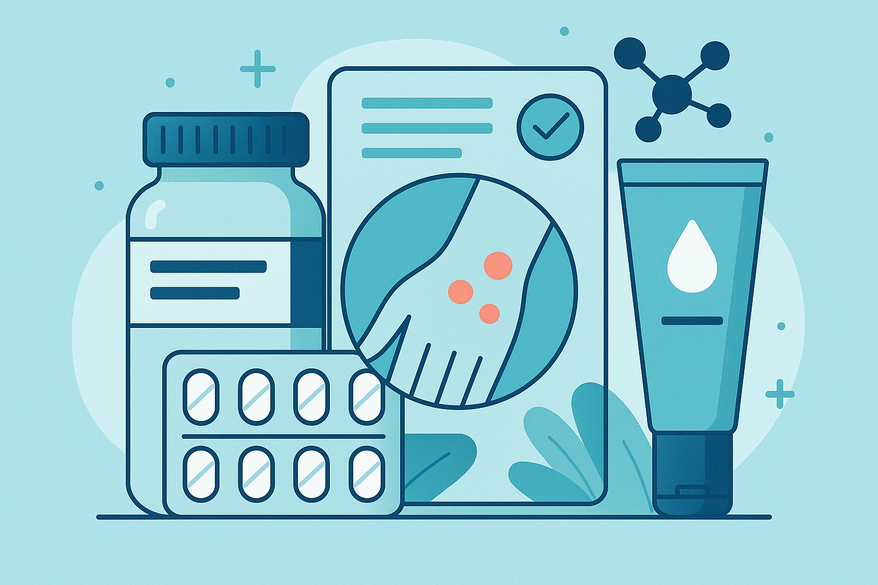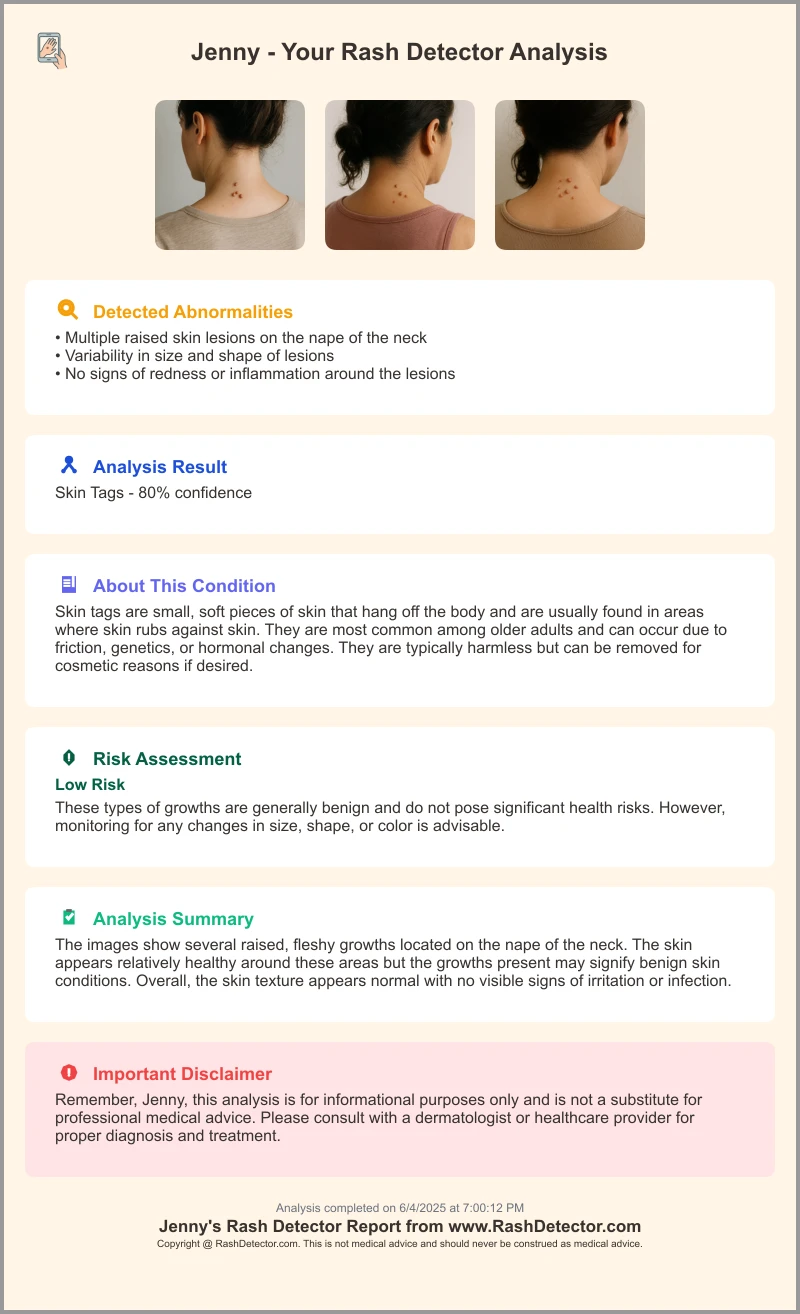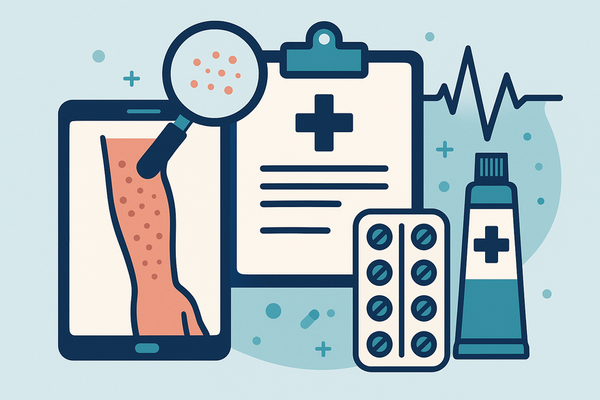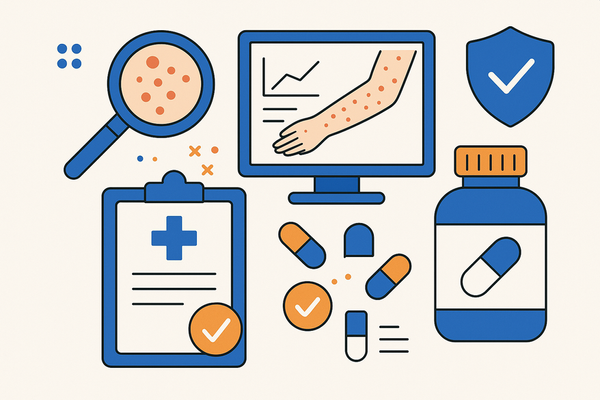Medication Rash Treatment: Comprehensive Guide to Identifying and Managing Drug-Induced Skin Reactions
Discover effective medication rash treatment with a comprehensive guide to identifying and managing drug-induced skin reactions for optimal patient safety.

Estimated reading time: 8 minutes
Key Takeaways
- Early recognition and management of drug-induced rashes can prevent therapy interruptions and serious complications.
- Accurate identification relies on timing, appearance, progression, and medication history.
- Treatment strategies include discontinuation or substitution of the offending agent, topical/oral therapies, and emergency interventions when needed.
- Preventive measures—such as documenting allergy history, graded testing, and regular self-monitoring—reduce risk of recurrence.
- Seek professional care promptly for red-flag symptoms and maintain clear communication with your healthcare team.
Table of Contents
- Introduction
- Understanding Medication-Induced Rashes
- Identifying a Medication-Induced Rash
- Management and Treatment Options
- Preventive Measures and Patient Guidance
- When to Seek Professional Help
- Conclusion
- FAQ
Introduction
Medication rash treatment focuses on managing and alleviating skin reactions caused by medications. Prompt recognition and proper care are vital. Untreated drug rashes can interrupt essential therapies, compromise patient safety, and, in severe cases, lead to life-threatening complications. This guide will help you identify, manage, and prevent medication-induced skin reactions. For a quick digital analysis, try the AI-driven Rash Detector.

Understanding Medication-Induced Rashes
Definition
A medication-induced rash is a cutaneous reaction triggered specifically by a drug or its metabolites. Unlike eczema, psoriasis, or infections, drug rashes arise when a medication provokes an immune or chemical response in the skin.
Types of Reactions
- Allergic rashes (immune-mediated):
- Urticaria (hives): Raised, itchy welts.
- Morbilliform eruptions: Measles-like red macules and papules.
- Fixed drug eruptions: Localized red or purple patches that recur in the same spot.
- Irritant rashes (non-immune):
- Direct chemical effect causes inflammation.
- Often localized, with redness or burning, without widespread immune activation.
Common Signs and Symptoms
- Sudden onset of redness, itching, or burning sensations.
- Raised bumps (papules), flat red spots (macules), or fluid-filled blisters (vesicles).
- Possible peeling or blistering in severe cases.
- Systemic features: fever, facial swelling, or generalized malaise.
Real-World Insight: A patient on a new antibiotic may develop itchy, red patches on the torso seven days after starting therapy. Recognizing the pattern and timing helps distinguish drug eruptions from viral rashes or insect bites.
Identifying a Medication-Induced Rash
Early identification is key to safe treatment. For more on symptom recognition, see Identifying Drug-Induced Rash Symptoms.
- Assess Timing
Most drug rashes appear 5–21 days after initiating or increasing a medication dose. A delay of hours to days is also possible with re-exposure (immune memory). - Examine Appearance and Progression
- Lesion types:
- Macules: Flat, red spots.
- Papules: Raised bumps.
- Vesicles: Small blisters.
- Distribution:
- Trunk and limbs are commonly involved.
- Symmetrical patterns suggest systemic causes.
- Progression:
- Spreading or coalescing rash may signal a severe reaction.
- Lesion types:
- Review Medication History
Compile a detailed list of:- New prescription drugs.
- Over-the-counter medications (pain relievers, cold remedies).
- Herbal or dietary supplements.
- Recent dosage changes or delayed doses.
- Differentiate Minor vs. Serious Reactions
- Minor reactions: Local redness or mild itch; no systemic symptoms.
- Serious reactions: Widespread rash with mucous membrane involvement, high fever, facial swelling, or difficulty breathing. Conditions like Stevens-Johnson syndrome require urgent care.
- Consult a Healthcare Provider
Bring a complete medication list, including start dates and doses. Allergy testing or graded drug challenges may be needed for definitive diagnosis.
Expert Tip: Keep a medication diary. Note start dates, any skin changes, and symptom severity to help your provider make faster, safer decisions. For tips on tracking daily rash photos and notes, see Track Rash Progress Pictures.
Management and Treatment Options
Discontinuation or substitution of the offending drug is the core first step. For a detailed comparison of OTC vs prescription treatments, see OTC vs Prescription Rash Treatments.
- Core Principles
Discontinue or substitute the offending drug under medical supervision. Focus on symptom relief while maintaining essential therapy when possible. - Topical Therapies
- Low- to mid-potency corticosteroid creams (e.g., hydrocortisone 1%) for mild to moderate localized inflammation.
- Emollients and barrier creams to soothe dry or peeling skin.
- Oral Medications
- Antihistamines:
- Diphenhydramine (Benadryl) for rapid itch relief.
- Cetirizine or loratadine for once-daily, non-sedating control.
- Systemic corticosteroids (e.g., prednisone): Short courses (5–7 days) for moderate to severe widespread rashes; taper dose under physician guidance.
- Antihistamines:
- Emergency Treatment
Epinephrine auto-injector (EpiPen) for anaphylaxis or acute respiratory compromise. Call 911 for breathing difficulty, throat tightness, or facial swelling. - Cautionary Note
Never stop or switch medications abruptly without consulting a healthcare provider. Sudden withdrawal can worsen underlying conditions or trigger rebound symptoms.
Preventive Measures and Patient Guidance
- Medication Allergy History
Always inform new providers about prior drug side effects or confirmed allergies. Wear a medical alert bracelet if you have life-threatening drug allergies. - Graded Challenge and Patch Testing
Graded dosing under supervision and patch testing can confirm delayed hypersensitivity while reducing risk. - Ongoing Self-Monitoring
Perform regular skin self-exams after starting any new medication. Photograph rashes to track changes over time and share visual records with your provider.
When to Seek Professional Help
Red-Flag Symptoms: Rapidly spreading rash or large blisters, skin peeling, mucous membrane involvement, facial or tongue swelling, difficulty breathing, high fever, or signs of infection.
Report all new symptoms immediately, even if mild at first. Telemedicine or nurse hotlines can provide after-hours advice. Ensure all your providers have the same up-to-date medication list.
Conclusion
Effective medication rash treatment hinges on early recognition, professional evaluation, and personalized interventions. Never alter or stop prescribed medications without medical guidance. Maintain clear communication with your healthcare team, keep thorough medication records, and stay vigilant for new or worsening skin changes.
Further Resources:
NYU Langone Health – Drug Reactions and Hives Management
Mayo Clinic – Drug Allergy Diagnosis & Treatment
Children’s National Hospital – Drug Rashes Health Library
FAQ
What are the most common signs of a drug-induced rash?
Typical signs include sudden redness, itching, raised bumps (papules), flat red spots (macules), or small blisters (vesicles). Systemic symptoms like fever or facial swelling may accompany severe reactions.
How soon after starting a medication can a rash appear?
Most drug rashes appear between 5 and 21 days after beginning or increasing the dose. Re-exposure can trigger a faster immune response, sometimes within hours.
Can I continue my medication if I develop a mild rash?
Minor rashes without systemic symptoms may be managed symptomatically, but always consult your healthcare provider before continuing or stopping any drug.
When should I seek emergency care?
Seek immediate help for red-flag symptoms: rapidly spreading rash, large blisters, mucous membrane involvement, difficulty breathing, facial swelling, or high fever.
How can I prevent future medication rashes?
Maintain a detailed allergy history, wear medical alert identification if necessary, undergo graded challenge or patch testing for confirmation, and monitor your skin closely after starting new treatments.





